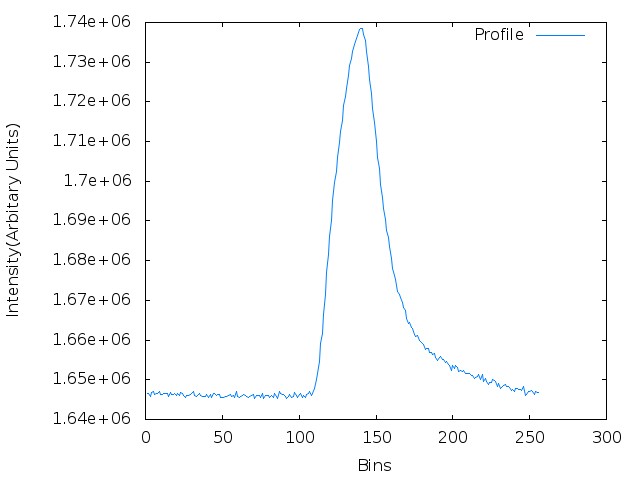Pulsar Observatory for Students
This was my introduction to radio astronomy. It was organised by National Centre for Radio Astrophysics (NCRA) under Tata Institute of Fundamental Research (TIFR).
The project was held at the Ooty Radio Telescope at Ooty, Tamil Nadu.It was conducted in two phases where the first part in July consisted of a theorotical introduction to pulsars and radio astronomy in general.
 The second stage involved field work in which we had to actually collect data for the pulsars and use it to analyse the features of the pulsar. In all there we five experiments which we were supposed to perform:
The second stage involved field work in which we had to actually collect data for the pulsars and use it to analyse the features of the pulsar. In all there we five experiments which we were supposed to perform:
- Estimation of Dispersion Measure
- Estimation of flux density of pulsar
- Estimation of modulation index of pulsar
- Estimation of the Period of pulsar
- Estimation of the Pulse broadening of pulsars due to interstellar scattering
I decided to choose the following pulsars for the experiments: B0329+54 and the famous Vela pulsar B0833-45.The observations were taken on the nights of 31st December 2014 and 2nd January 2015. The observation period was generally of the order of 10 minutes since both pulars were relatively bright sources.(B0329+54 flux ~ 1500mJy and Vela ~5000mJy)
B0329+54
This pulsar has a period of about ~700 milli seconds.Using a Fourier transform on the time series observed,the period was accurately determined as 714.572 ± 0.000021 milli seconds. After this the profile was folded with the determined time period over the observation length to improve the signal to noise ratio.The final profile obtained was as follows:

B0833-45 The Vela Pulsar
This is one of the brightest pulsars in the sky.The same analysis was repeated on data for this pulsar.Finally I obtained the time period as 89.37971 ± 0.00042 milli seconds.The final profile looked like:

One can unmistakbly see that the profile shape is not at all symmetrical and an exponential decay tail is observed.This was the basis of the last experiment which involed measurement of pulse broadning due to interstellar scattering.
Broadly(no pun intended), the broad shape of the profile can be explanined as arising due to random fluctuations in the refractive index of the interstellar medium. Note that this is quite distinct from the pulse dispersion which results because of the ISM being a non-dispersive radio medium.If one were to put up an analogy in the optical domain,one can say that this is in some sense twinkling of the pulsar in the radio frequency range.But this idea should not be taken too seriouly for it has its pitfalls.
One can fit the tail as an exponential decay to estimate something known as the scattering timescale.This gives us a measure of time-scale of random fluctutaions in the ISM. For the Vela pulsar, I obtained it to be ~11.13 ± 0.78ms.
On the last day,we were supposed to give a presentation of the analysis we had done.The slides of this presentation can be found here.
At the end, I would like to say that this was quite an interesting experience and quite an enjoyable one at that too!